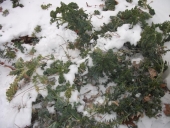
 14
14




'What we do now echoes in eternity.' Marcus Aurelius
How Permies Works Dr. Redhawk's Epic Soil Series
 6
6




Zone 6, 45 inches precipitation, hard clay soil












 5
5




'What we do now echoes in eternity.' Marcus Aurelius
How Permies Works Dr. Redhawk's Epic Soil Series

 8
8




How Permies works: https://permies.com/wiki/34193/permies-works-links-threads
My projects on Skye: The tree field, Growing and landracing, perennial polycultures, "Don't dream it - be it! "
 8
8




"In action, watch the timing."-Tao Te Ching
"Jus' Press"-Ledward Kaapana
 7
7




I do Celtic, fantasy, folk and shanty singing at Renaissance faires, fantasy festivals, pirate campouts, and other events in OR and WA, USA.
RionaTheSinger on youtube
 4
4




"In action, watch the timing."-Tao Te Ching
"Jus' Press"-Ledward Kaapana
 6
6




 6
6




 5
5




Hi M.K. Love your list! We also do sorrel, cabbage, Asian greens like komatsuna and bok choy, and potato onions. One things that's fun in the PNW is learning that some things will perennialize here that won't elsewhere. For example, my bulbing fennel came back after I cut it back late summer, and it looks great!
Regarding peas - there is a way to foil the mice.... Put row cover over the seeds and weight down the edges with garden stakes or tree branches so they can't crawl underneath. Keep the row cover on until after the seeds have sprouted and are at least a couple inches tall. Then you get to eat the peas, and the mice dont! Haha!
"In action, watch the timing."-Tao Te Ching
"Jus' Press"-Ledward Kaapana
 4
4




"In action, watch the timing."-Tao Te Ching
"Jus' Press"-Ledward Kaapana
 5
5




 8
8




Bob Waur The Elder
Eat what you can, and what you can't you can
<Farm wisdom> Sell the best and eat the rest
 6
6





 3
3




JayGee

|
The first person to drink cow's milk. That started off as a dare from this tiny ad:
Learn Permaculture through a little hard work
https://wheaton-labs.com/bootcamp
|





